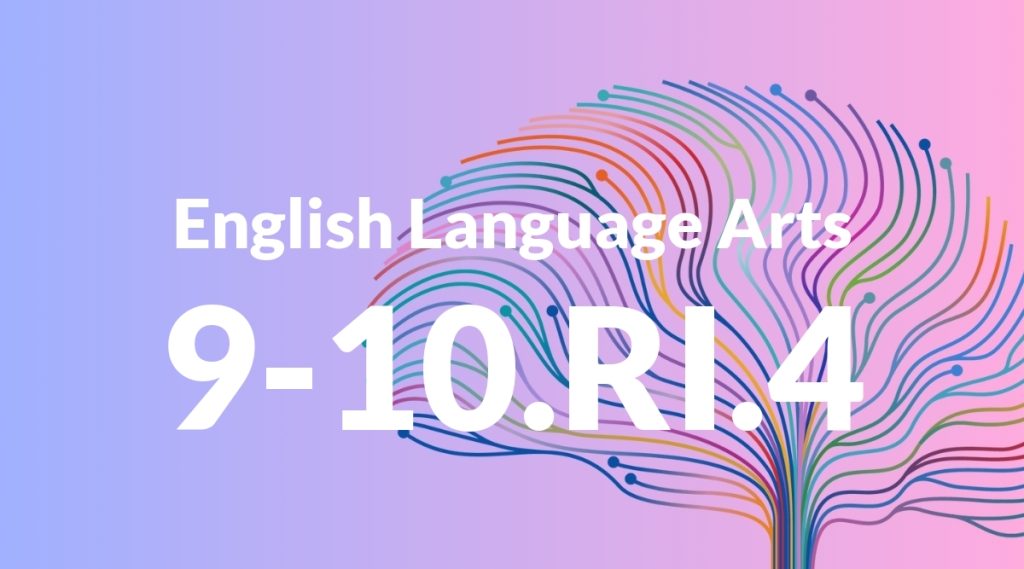Standard: 9-10.RI.4 – Determine the meaning of words and phrases as they are used in a text, including figurative, connotative, and technical meanings; analyze the cumulative impact of specific word choices on meaning and tone (e.g., how the language of a court opinion differs from that of a newspaper).
Grade level: Grade 9-10
Subject: English Language Arts
Domain: Reading: Informational Text
Teacher Overview
This standard focuses on helping students understand and analyze the meaning of words and phrases within a text, including their figurative, connotative, and technical meanings. It emphasizes the importance of word choice and how it impacts the overall meaning and tone of the text. This skill is crucial for students to critically engage with complex informational texts and enhance their comprehension and analytical abilities. Students should be familiar with basic figurative language, connotation and denotation, and identifying tone in simpler texts.
Students will develop the ability to critically analyze complex texts, understanding how word choice influences meaning and tone, and apply this analysis in their own writing and discussions.
Common Misconception 1
A common misconception is that words have a single, fixed meaning regardless of context. This is incorrect because the meaning of a word can change depending on how it is used in a sentence and the surrounding context.
Intervention 1
To address this misconception, provide students with varied examples showing how context influences word meaning. Use exercises that require students to determine meanings based on different contexts.
Common Misconception 2
Another misconception is that tone is always explicitly stated and not influenced by word choice. This is incorrect because tone is often implied through the author’s choice of words and phrases.
Intervention 2
To remediate this, engage students in activities where they infer tone from word choices in various texts. Discuss how subtle differences in language can alter the overall tone.
Prerequisite Knowledge
Students should have a basic understanding of different types of figurative language (e.g., metaphors, similes), connotation versus denotation, and the ability to identify tone in simpler texts.
Subsequent Knowledge
After mastering this standard, students will be able to critically analyze complex texts across various genres, understanding how word choice influences meaning and tone, and apply this analysis in their own writing and discussions.
Instructional Activities
- Contextual word meaning exercises
- Tone inference activities
- Comparative analysis of different text types
- Group discussions on word choice impact




